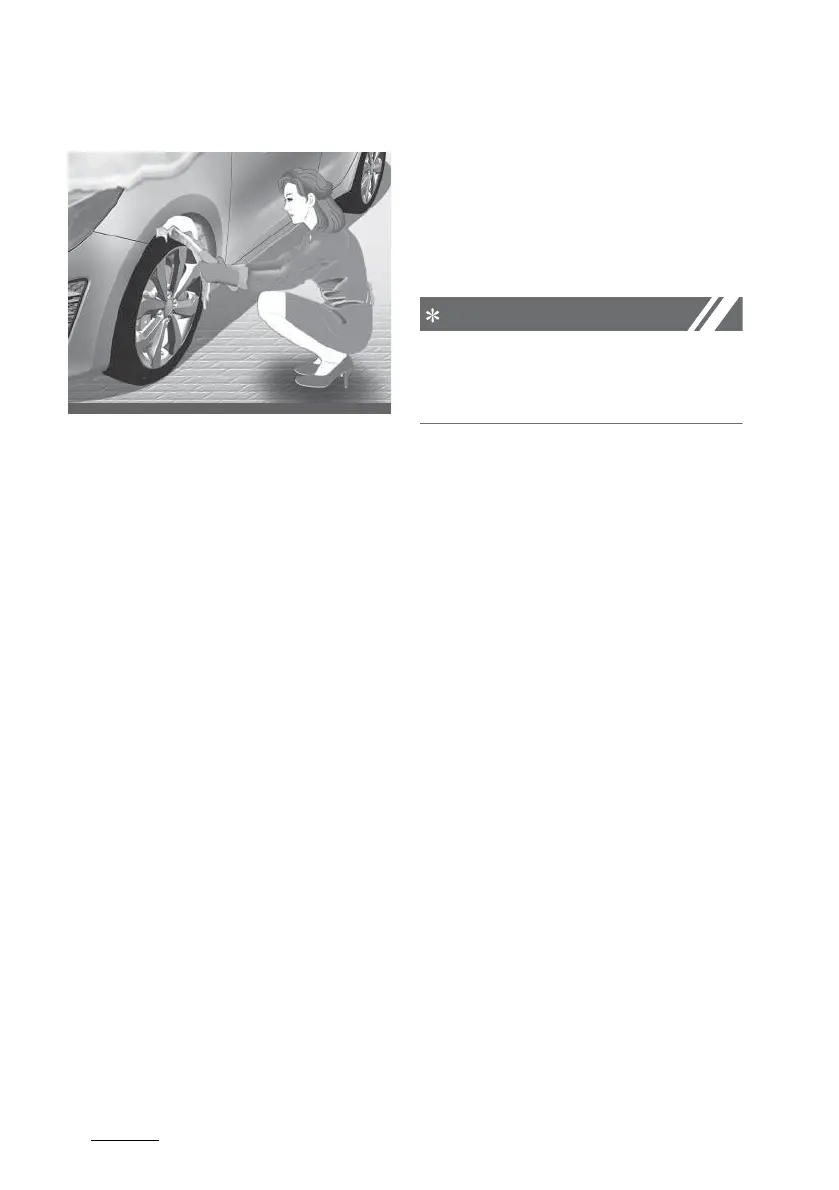Driving your vehicle
1646
Winter driving
Winter driving
More severe weather conditions of
winter result in greater wear and
other problems. To minimise winter
driving problem, you should follow
these suggestions:
Snowy or icy conditions
To drive your vehicle in deep snow, it
may be necessary to use snow
tyres or to install tyre chains on
your tyres. If snow tyres are
needed, it is necessary to select
tyres equivalent in size and type of
the original equipment tyres. Failure
to do so may adversely affect the
safety and handling of your car.
Furthermore, speeding, rapid accel
-
eration, sudden brake applications,
and sharp turns are potentially very
hazardous practices.
During deceleration, use engine
braking to the fullest extent. Sud
-
den brake applications on snowy or
icy roads may cause skids to occur.
You need to keep sufficient distance
between the vehicle in operation in
front and your vehicle. Also, apply
the brake gently. It should be noted
that installing tyre chains on the
tyre will provide a greater driving
force, but will not prevent side skids.
Tyre chains are not legal in all coun
-
tries. Check the country laws before
fitting tyre chains.
Snow tyres
If you mount snow tyres on your
vehicle, make sure they are radial
tyres of the same size and load
range as the original tyres. Mount
snow tyres on all four wheels to bal
-
ance your vehicle䳓s handling in all
weather conditions. Keep in mind
that the traction provided by snow
tyres on dry roads may not be as
high as your vehicle's original equip
-
ment tyres.You should drive cau
-
tiously even when the roads are
clear. Check with the tyre dealer for
maximum speed recommendations.

